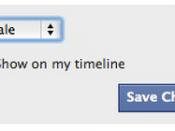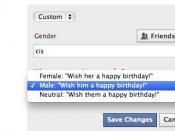A baby is born and the doctor looks at the proud parents or parent and says three simple words: It's a boy, or it's a girl! Before a newborn child even takes his or her first breath of life outside the mother?s womb, he or she is distinguishable and characterized by gender. The baby is brought home and dressed in clothes that help friends, family and even strangers identify the sex of the child. Baby boys are dressed in blue and baby girls are dressed in pink. The baby boy may be dressed in a blue jumpsuit with a football or a baseball glove on it. The baby girl may wear a bow in their hair and flowered pajamas. As the boy begins to grow, he is given a miniature basketball and a hoop to play with. The girl is given dolls and doll clothes to dress them up in.
Even going further, eventually the boy may play with Legos and Lincoln Logs and the girl gets a PlaySchool oven and a plastic tea set with which to play house. Sounds pretty normal right? Why? As illustrated in the not-so-fictional scenario above, gender socialization begins very early in life. Society has accepted such stereotypical things as baby boy blue and baby girl pink to help identify the sex of a child. Heaven forbid the little Joey looks like a girl or baby Michelle is mistaken for a boy. Mothers and fathers make it easy for everyone to distinguish their bundle of joy by utilizing the socially established gender stereotypes. But where and how did these stereotypes come from? Unfortunately, I don't think there is a definite answer to that question. We seem to accept that blue is for boys and pink is for girls. Boys generally play with balls, toy...



Interesting
I thought that this essay was very interesting because you dont see these type of topics too much. I liked this essay and i give it a 94%
6 out of 6 people found this comment useful.